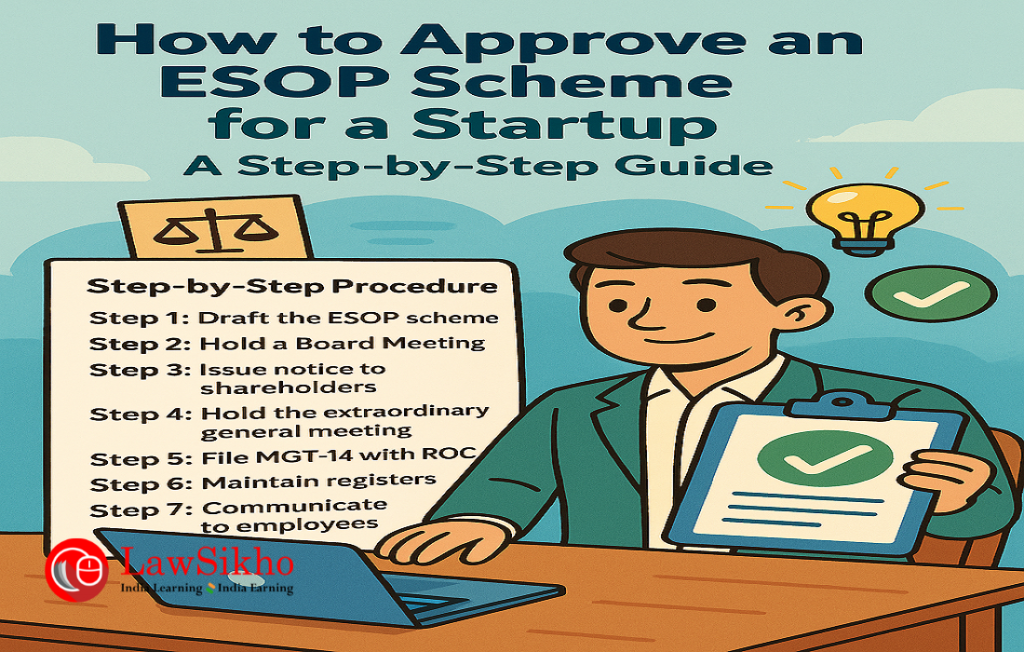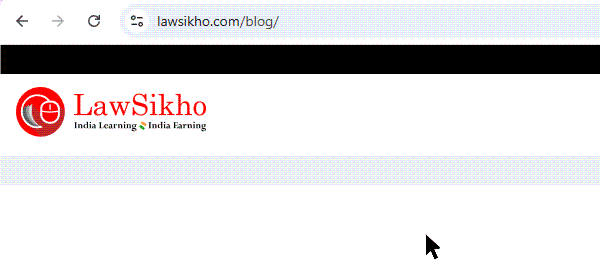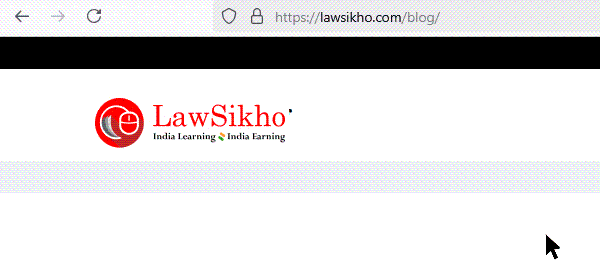This article teaches readers how to approve an ESOP scheme in a startup.
Table of Contents
Introduction
If you have been following my series on how to draft an ESOP scheme, then you would already know how to build a solid ESOP scheme from the ground up.
But if you missed the series on how to draft an ESOP scheme, let me give a quick recap.
So, in Part 1 of the series, I discussed the foundational elements of TechSolve’s ESOP
- crafting a purpose clause that aligns incentives,
- defining terms to prevent misunderstandings,
- establishing clear eligibility criteria, and
- determining the optimal pool size for their growth stage.
In Part 2, I explored the operational mechanics and dealt with
- how options are granted,
- when they vest,
- how employees exercise them,
- what happens when people leave, and
- how disputes get resolved.
But here is the thing, even the most carefully drafted ESOP scheme is just a document until it is properly approved and implemented.
I still remember a founder who called me in a panic after realising that his team had been operating under an ESOP scheme for nearly a year that was never properly approved by the shareholders.
They had issued grant letters, celebrated “equity” milestones with employees, only to discover they had no legal standing whatsoever. The cleanup was painful and embarrassing, not for the company but for the lawyer who was advising them.
This article will prevent you from making similar mistakes by showing you the exact steps to legally implement your ESOP scheme in compliance with the Companies Act 2013 and related Rules.
I will continue using our fictional startup, TechSolve to illustrate each step.
Let us turn the ESOP scheme from a promising document into a legally binding reality.
The legal framework
First things first, it is important that you understand the legal foundation that governs ESOPs in India. The regulatory framework differs depending on whether your company is listed or unlisted.
For unlisted companies like TechSolve (which includes both private limited companies and unlisted public companies), the key provisions are:
- Section 62(1)(b) of the Companies Act, 2013: This section is the bedrock of ESOP implementation. It allows companies to issue shares to employees under a scheme, provided you obtain shareholder approval through a special resolution.
- Rule 12 of the Companies (Share Capital and Debentures) Rules, 2014: This Rule outlines the specific compliance requirements for companies implementing an ESOP scheme, except for listed companies.
Before moving forward, I strongly recommend that you go and click those links and read the provision. It will make it easier for you to understand when we start the step-by-step procedure of approving the ESOP scheme.
Anyways, just so you know, the regulatory framework for the ESOP scheme for a listed company is more complex, as it involves the SEBI (Share Based Employee Benefits and Sweat Equity) Regulations, 2021.
Given their complexity, I say that SEBI regulations deserve a separate article altogether.
Keeping Sebi regulations aside, this article will focus solely on the provisions under the Companies Act. The reason is that most startups implementing ESOP schemes are unlisted private companies (including our example of TechSolve).
The step-by-step procedure to approve an ESOP scheme
Now that you know the law surrounding ESOPs, let us move forward and have a look at the approval process.
Step 1: Draft the ESOP scheme
This was the focus of our previous two articles.
If you have read them, you already know what a well-drafted ESOP scheme should include. (here is the link to ESOP scheme I drafted in the previous articles). But if you have not, here is a quick recap of the key terms a comprehensive ESOP scheme should cover:
- The purpose of the ESOP
- Clear definitions of key terms
- Eligibility criteria
- Total pool size
- Grant provisions
- Vesting schedules
- Exercise mechanics
- Treatment upon termination
- Tax implications
- Dispute resolution mechanisms
If you have been following along with TechSolve’s example, you already have this document ready. If not, I strongly recommend reviewing the first two articles before proceeding further.
Step 2: Hold a Board Meeting
The first formal step in implementing an ESOP is getting board approval. This requires a properly convened board meeting.
For TechSolve, this meant that Vikram, Priya, and Arjun (the three founders who constitute the board) needed to meet formally and approve the following:
- approve the drafted ESOP scheme in its entirety
- date, time, and venue for an Extraordinary General Meeting (EGM) to seek shareholder approval
- notice for the EGM along with the explanatory statement
- draft special resolution to be put to a vote at the EGM
Here is a draft notice of meeting and board resolution that I prepared for TechSolve.
The board resolution should specifically reference section 62(1)(b) of the Companies Act and Rule 12 of the Companies (Share Capital and Debentures) Rules to demonstrate statutory compliance. I have seen resolutions rejected by the Registrar of Companies (ROC) for lacking these specific references.
Step 3: Issue notice to shareholders
Once the board has approved the scheme and EGM details, the next step is to send a notice to all shareholders. Click to see the draft notice of EGM with explanatory statement.
The Companies Act requires at least 21 clear days’ notice for an EGM (though this can be shortened if shareholders representing 95% of voting power consent). For startups like TechSolve with a small shareholder base, getting this consent is usually straightforward, but don’t skip the formalities.
The notice must include:
- The date, time, and venue of the meeting
- The agenda clearly stating that approval of the ESOP scheme is to be considered
- An explanatory statement as required under section 102 of the Companies Act
- The specific disclosures required under Rule 12(2) of the Companies (Share Capital and Debentures) Rules
The disclosures under Rule 12(2) are particularly important and include:
- total number of stock options to be granted
- Identification of classes of employees entitled to participate
- appraisal process for determining eligibility
- requirements of vesting and the vesting period
- maximum period within which options shall be vested
- exercise price or pricing formula
- exercise period and process
- lock-in period, if any
- maximum number of options to be granted per employee
- method of option valuation
- conditions under which options may lapse
- specified time period within which an employee shall exercise the vested options in the event of termination or resignation
I always tell junior lawyers to be particularly careful with this explanatory statement. I have seen situations where shareholders (especially investors) objected to ESOP schemes, not because they disagreed with the concept, but because they felt blindsided by specific terms of the ESOP that were not clearly disclosed in the notice of EGM.
For TechSolve, I drafted a comprehensive 5-page explanatory statement that walked through every significant aspect of the scheme. It seemed excessive to Vikram at first, but when their angel investors had questions about dilution impact, having those details readily available in the notice smoothed the approval process considerably.
Step 4: Hold the extraordinary general meeting
With proper notice given, the next step is to actually hold the EGM. For early-stage startups like TechSolve with few shareholders, this might seem like a formality, but proper documentation is crucial.
The EGM should follow all procedural requirements:
- Ensure a proper quorum is present
- Record attendance
- Have the chairperson (typically one of the directors) introduce the resolution
- Allow for discussion and questions
- Put the resolution to a vote
- Record the results in the minutes
Remember that approval of an ESOP scheme requires a special resolution, meaning it must be approved by shareholders representing at least 75% of the voting power present and voting. For TechSolve, with the three founders holding most of the equity, this wasn’t difficult, but companies with institutional investors need to ensure they have sufficient support before calling the meeting.
Here is the draft of special resolution.
Always maintain detailed minutes of the EGM, recording who attended, what questions were asked, and how the vote was conducted. I once witnessed a dispute where a minority shareholder challenged an ESOP scheme months after approval, claiming they were not properly informed—but comprehensive minutes showing their participation in the discussion saved the day.
Click here to see the draft minutes I prepared.
Step 5: File MGT-14 with ROC
Once the special resolution is passed, you have 30 days to file it with the Registrar of Companies (ROC) using Form MGT-14. This is a critical step that many startups neglect, only to face complications later.
The MGT-14 filing must include:
- A certified true copy of the special resolution
- A copy of the notice of the EGM with the explanatory statement
- A copy of the approved ESOP scheme
For TechSolve, we made sure to file the MGT-14 within a week of the EGM. I always advise clients not to wait until close to the deadline—ROC filings sometimes get returned for technical reasons, and you need time to correct and resubmit.
Common mistake: I have seen companies submit incomplete attachments with their MGT-14 filings. The ROC requires the complete scheme document, not just a summary. Another frequent error is not attaching the explanatory statement, which can lead to the rejection of the filing.
Step 6: Maintain registers
Once your ESOP scheme is approved and filed, you need to start maintaining proper records. The Companies (Share Capital and Debentures) Rules require maintaining a register of ESOPs in Form SH-6.
This register must contain details of:
- Name of Company
- Registered office address
- Date of special resolution
- S. No. (Serial Number)
- Name of the grantee
- Number of options granted
- Date on which options vested
- Exercise period
- Date on which options were exercised
- Options exercised
- Exercise price
- Number of shares arising as a result of the exercise of the option
- Folio No. of Register of members having respective entry
- Lock-in period, if any
- Option lapsed, if any
- Total number of options in force
- Amount forfeited/refunded if the option is not exercised
- Any variation of the terms of the scheme and its effects
- Signature
- Remarks
For TechSolve, I recommended setting up this register from day one, even before making their first grants. It is much easier to maintain this register contemporaneously than to reconstruct it later.
A piece of advice to you all.
Whenever your client is preparing for a funding round, chances are the investors will ask for detailed information on equity distribution to employees. This is where a well-maintained ESOP register can make all the difference. It not only shows that your client is organized but also builds investor confidence.
Step 7: Communicate to employees
The final step is to actually start granting options to employees through formal grant letters. While this is not strictly part of the approval process, it is where your ESOP scheme finally serves its purpose.
For TechSolve, we drafted a standard grant letter that included:
- The number of options granted
- The grant date
- The exercise price
- The vesting schedule
- The exercise period
- Tax implications
- Reference to the approved ESOP scheme for all other terms
Practical tip: Do not underestimate the importance of clear communication. Technical ESOP documents often confuse employees, potentially undermining the motivational value of your equity program. So, make sure that you create a simple “ESOP FAQ” document that explains the key concepts in plain language, alongside the formal grant letters.
Practical tips and common mistakes
Having guided numerous companies through this process, I have observed patterns of success and failure. Here are some practical insights to help you navigate the approval process smoothly:
Check your authorised capital
One of the most embarrassing mistakes I have witnessed involved a fintech startup that approved a generous ESOP scheme, only to realize they did not have enough authorised capital to issue the shares when options were exercised.
Before finalising your ESOP pool size, check your company’s Memorandum of Association to confirm your authorised share capital. If the ESOP pool plus existing issued capital exceeds your authorised capital, you will need to increase it first, which requires its own special resolution and ROC filing.
For TechSolve, we verified that their authorized capital was 1,00,000 equity shares, which comfortably accommodated their existing 91,000 issued shares plus the 9,000 ESOP pool.
Get investor approval early
If the client you are advising has institutional investors, they likely have veto rights over ESOP schemes through shareholders’ agreements. Do not wait until the formal EGM to discover objections.
I always recommend to junior lawyers to circulate the draft scheme to key investors well before the board approval stage. This gives you time to address concerns and negotiate changes without the pressure of formal meetings.
When TechSolve shared their draft with their angel investors, one investor suggested adjusting the vesting acceleration clause for acquisitions. Making this change early avoided potential conflict at the EGM.
Align with your funding timeline
Timing matters when implementing an ESOP scheme. If you are approaching a funding round, coordinate with potential investors about ESOP expectations.
Many VCs prefer that companies create their ESOP pool before their investment (from pre-money equity) rather than after (which would dilute everyone, including the new investors). Understanding these dynamics can help you time your ESOP approval strategically.
For TechSolve, we deliberately implemented their ESOP scheme two months before their anticipated pre-Series A round, based on discussions with potential lead investors who confirmed they expected a 9% pool to be in place pre-investment.
Consider tax implications for employees
While the ESOP approval process itself has no tax implications, the scheme’s structure significantly impacts how employees will be taxed when they exercise options and sell shares.
In India, employees typically face tax at two stages: first, when exercising options (on the difference between fair market value and exercise price) and again when selling shares (on the capital gains).
I’ve seen startups create schemes without considering these tax realities, leading to situations where employees can’t afford to exercise their options due to immediate tax liabilities.
For TechSolve, we incorporated specific provisions allowing net settlement (where fewer shares are issued to cover the tax liability) to address this challenge.
Do not forget foreign exchange requirements
If your startup has non-resident employees who will receive ESOPs, remember that there are FEMA (Foreign Exchange Management Act) implications to consider.
These employees will need to comply with RBI guidelines for foreign investments in Indian companies when exercising their options. Your scheme should acknowledge these requirements to avoid complications later.
Review your shareholders’ agreement
Many startups have shareholders’ agreements that contain provisions relevant to ESOPs, such as:
- Pre-emptive rights for existing shareholders
- Right of first refusal for transfers
- Tag-along rights
- Information rights
Your ESOP scheme should be consistent with these existing obligations. I have witnessed situations where companies implemented ESOP schemes that inadvertently violated their shareholders’ agreements, creating legal complications.
Before finalising your scheme, have legal counsel review your existing shareholders’ agreement to ensure alignment.
Final thoughts
Look, now that I have concluded this three-part series, what you have got is not just theory. It is a real toolkit you can use tomorrow morning with a client.
I have seen too many junior associates who can produce a beautiful ESOP document but then freeze when it is time to actually implement it.
Trust me, founders do not care how elegantly you have drafted the vesting provisions if the scheme is not legally enforceable because you missed a filing deadline.
What separates the lawyers’ clients’ calls from those they do not?
It is the ability to guide them through the entire process, from initial drafting to that final MGT-14 filing. I have built my practice on being the lawyer who does not just hand over documents but actually helps founders turn those documents into reality.
That is the difference between being a service provider and becoming a trusted advisor. Master this end-to-end process that I have covered, and you will find yourself in boardroom discussions about business strategy, not just getting calls when there is a document to draft.






 Allow notifications
Allow notifications
